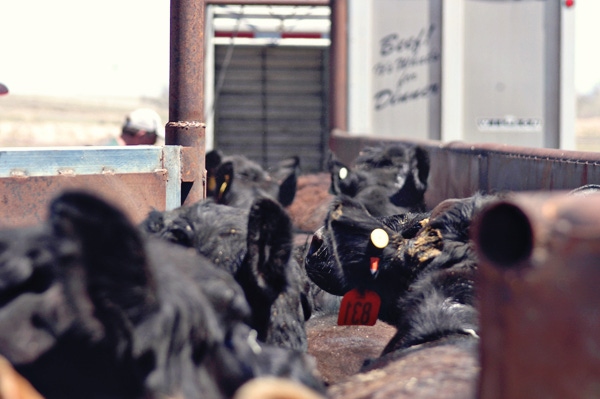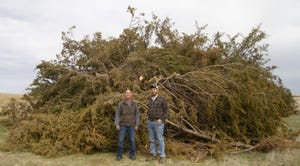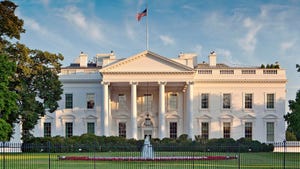Futures show late-week promise
Weather continued to clog market channels and keep a lid on cattle prices, but a rally in Lean Hog futures offered support.
March 16, 2019

Another week, another market-clogging, performance-robbing storm. This time, what’s termed a bomb cyclone that brought blizzard conditions, heavy rain, damaging winds and flooding.
“Receipts were curtailed again this week due to reduced or cancelled sales in Nebraska and the Dakotas as an intense storm ripped through the Rockies and into the Central and Northern Plains,” explain analysts with the Agricultural Marketing Service (AMS). “Low-lying areas that feed the Missouri River are inundated with moisture and the frozen ground underneath can't absorb any more precipitation.”
“Receipts were sharply shortened, due to heavy rain in the local reporting area,” explained the AMS reporter on hand for Wednesday’s sale at Huss Platte Valley Livestock Auction in Kearney, Neb. “Muddy roads and pen conditions have dampened the mood to procure cattle for the time being.”
Overall, steers and heifers sold $1-$5 per cwt lower in the North and South Central regions of the nation, according to AMS. Grass-bound cattle from the Southeast brought steady money.
“Cow-calf producers in Nebraska, Kansas, South Dakota and Missouri are poised to wean a calf crop that will fall way short of perfect this fall,” AMS analysts say. “Anecdotes of cattleman losing 10-25% of their calf crop is commonplace this year, even for some cattlemen who normally have +95% at the end of calving season.”
Feeder Cattle futures wobbled, but picked up some late -week support from Live Cattle (more below). Week to week on Friday, they closed 7 cents to $2.60 lower (spot Mar) through the front three contracts. They were an average of 55 cents higher in the next three and then an average of 11 cents lower.
The CME Feeder Cattle Index declined to the lowest level since last May at $137.65 on Thursday.
“The calf market may be underperforming because of the failure of the feeder cattle market to make any advances,” says Andrew P. Griffith, agricultural economist at the University of Tennessee, in his weekly market comments. “The feeder cattle market has been sluggish for five months and has failed to gain any traction despite the strong finished cattle market.”
Basis the Southern Plains, Griffith explains the price spread between fed steers and feeder steers weighing 700-800 pounds averaged $17.66 per cwt for the first 10 weeks of the year.
“This price spread is $9.15 per cwt lower than the five-year average over the same 10 weeks,” Griffith says. “This means 750-pound steers are being undervalued by $69 per head compared to the five-year average feeder steer and fed steer price spread. As stocker and backgrounding margins continue being pinched, these operations are forced to pay less for calves to alleviate some of the difference.”
Although noting the 1% year-to-year increase in cattle outside feedlots Jan. 1, analysts with USDA’s Economic Research Service (ERS) analysts explain, “With continued large supplies of cattle in feedlots and a slower expected pace of placements in early 2019, feeder steer prices in first-half 2019 were little changed, but prices in second-half 2019 were raised as calf supplies are expected to be tighter.”
In the latest Livestock, Dairy and Poultry Outlook (LDPO), USDA bumped up its expectation for feeder steer prices to $141-$149, with a midpoint price of $145 per cwt.
Fed prices soften
Negotiated cash fed cattle prices were mainly $1 lower at $127 per cwt. in the Southern Plains and Northern Plains through Friday afternoon. Dressed trade in the western Corn Belt was steady at $204-$205.
Except for 57 cents lower in spot Apr, Live Cattle futures closed an average of 68 cents higher week to week on Friday. Part of the support came from the latest winter storm and continued pressure on feedlot performance.
The average dressed steer carcass weight for the week ending Mach. 2 was 9 pounds less than a year earlier at 874 pounds, according to USDA’s Actual Slaughter Under Federal Inspection report. Dressed heifer carcass weights were 15 pounds lighter at 813 pounds.
However, the biggest boost to Live Cattle likely stemmed from a massive rally in Lean Hog futures, which moved an average of $7.01 higher through the front six contracts from Monday through Friday. Apparently, traders are becoming more convinced that African Swine Fever in China will ultimately lead to a significant increase in U.S. pork exports, either directly or to fill supply gaps left by other global exporters.
Bottom line, cattle futures prices at the end of the week, coupled with record or near record-large open interest, should give market bears plenty to think about.
Griffith believes fed cattle prices can still make a run at $130.
“The number of fed cattle marketed in 2019 is anticipated to be lower than in 2018 as feedlots continue to slow the pace of marketings,” say ERS analysts, in the LDPO. “Since the February Outlook report, fed cattle prices have continued their seasonal trend upward; prices typically peak in the spring. This reflects a period when fewer fed cattle are slaughtered, carcass weights are lighter, and demand picks up in anticipation of the grilling season. The current pace of slaughter, combined with lower carcass weights, could help support higher boxed-beef prices.”
Based on current price data, expected lower marketings and lighter carcass weights this year, those analysts note the fed steer price forecast for this year was raised to $116-$123 per cwt.
Potential remains for beef value
Choice wholesale beef value was 86¢higher week to week on Friday at $226.99 per cwt. Select was $1.44 lower at $217.34.
“One could assume that beef consumption in the Northeast portion of the United States has been negatively impacted by the snow and rain the past several weeks,” Griffith says. “If that is a true statement, then the beef cutout has failed to experience its full potential this winter.
“Additionally, it could mean there will be pent up beef demand in the most densely populated portion of the country, which could lead to strong positive price movement once consumers are able to make their way to restaurants and meat counters. If such a run is made on the beef market, it may coincide with traditionally strong spring demand, which could result in a skyrocketing market,” Griffith says.
“It may be more probable to see a jump in prices once consumers are able to navigate from their homes, and then a slower and steadier increase for the spring market.”
About the Author(s)
You May Also Like


.png?width=300&auto=webp&quality=80&disable=upscale)


